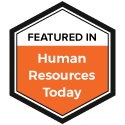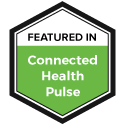It should come as no surprise that as individuals obtain healthcare under the Affordable Care Act, the greatest concern is cost. From individual plans to employer-sponsored plans, individuals want the most bang for their buck when it comes to minimum essential coverage. However, the results of a recent Kaiser Family Fund survey suggest that while cost is an issue, high-deductible plans are looking more desirable. Here’s why.
KFF released their 2016 Employer Health Benefits Survey earlier this month, covering an array of topics involving premiums, deductibles, and plan options for both individual and family plans. The survey reveals that this year, there was about a 3% increase in annual family premiums for employer-sponsored healthcare. That averages to $18,142. Consider that figure in the midst of a 2.5% wage increase and 1.1% increase in inflation. Per the KFF, roughly $5,277 is the annual contribution to family premiums. While this does reflect some increase, it’s small compared to years past.
In 2015, the increase was only 4%, yet a 31% increase was witnessed in the five years between 2006 and 2011. From 2011 to 2016, the increase was 20%. Times are changing. The reason? Individuals and families are aiming for higher deductible plans that allow for Health Savings Accounts (HSAs) and Health Reimbursement Arrangements (HRAs). The KFF found that 29% sought out these arrangements in their plan selections, which is a 9% increase from 2014. As for PPO’s, 48% are enrolled—a 10% decrease from 2014.
It may seem strange at first, but where employees are able to receive some form of a discount, the payoff works in their favor despite increases in deductibles (up 12% from 2015 and 49% since 2011). To further add to the surprising figures, 51% paid annual deductibles of at least $1,000—65% of that figure working at smaller firms with under 200 employees. Keep in mind that HRAs and HSAs can alleviate the burden of those deductibles where applicable.
It’s not a one size fits all model. As more plans become available from state to state, it’s a reminder for all workers to research their benefits plans before committing to one.





